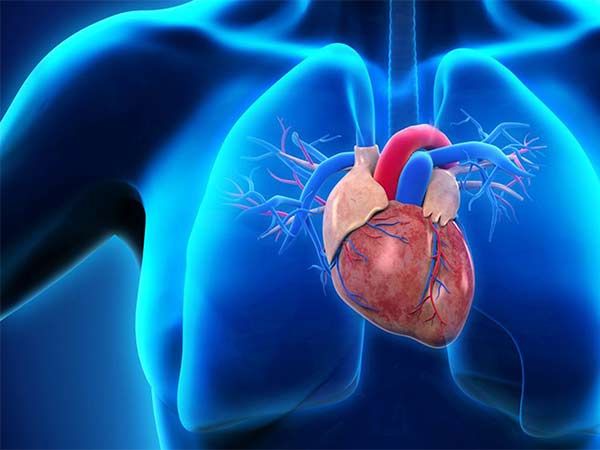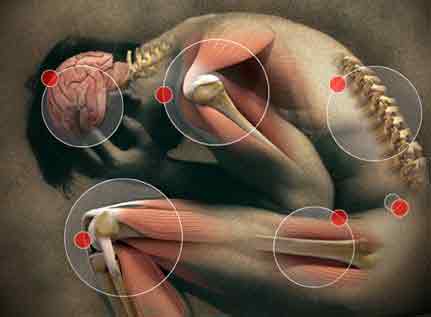Sacubitril/Valsartan Not Superior to Valsartan for Advanced Heart Failure
Trial finds no benefit from combination therapy for heart failure with reduced ejection fraction
Patients with heart failure with reduced ejection fraction (HFrEF) did not have better health outcomes if they took sacubitril/valsartan combination therapy compared with valsartan alone, according to new data presented at the American College of Cardiology’s 70th Annual Scientific Session.
Heart failure, a leading cause of hospitalization among adults over age 65, is a condition in which the heart becomes too weak to pump blood effectively to the rest of the body, causing fatigue and shortness of breath. For patients with severe heart failure, treatment options are limited to a mechanical heart pump or heart transplant. Doctors have sought ways to slow the progression of severe heart failure to delay the need for these invasive options.
The U.S. Food and Drug Administration has approved sacubitril/valsartan for treatment of heart failure, but the major clinical trial that led to the drug combination’s approval, called PARADIGM-HF, had relatively few participants with New York Heart Association (NYHA) Class IV heart failure, the most severe form of the disease. The new trial, called LIFE, was designed to determine whether sacubitril/valsartan is superior to valsartan alone in patients with severe HFrEF.
The trial found no significant improvements with the combination drug when compared with valsartan in terms of the primary endpoint: change in heart failure severity as measured by the area under the curve for N-terminal pro-B-type natriuretic peptide (NT-proBNP) levels. The results also showed no difference in terms of clinical outcomes, though results for some secondary and tertiary endpoints favored valsartan, including a finding that patients taking valsartan were significantly less likely to experience hyperkalemia (elevated potassium levels).
“The results of the LIFE trial show that sacubitril/valsartan is not superior to valsartan for lowering NT-proBNP levels in patients with advanced heart failure,” said Douglas L. Mann, MD, Lewin Distinguished Professor of Cardiovascular Disease at Washington University School of Medicine and the study’s lead author. “This is important because the type of heart failure patients studied in the LIFE trial were sicker than the patients in PARADIGM-HF. Although the trial did not have the statistical power to evaluate endpoints such as cardiovascular death and heart failure hospitalization, when you look at the totality of the data, everything was in favor of valsartan.”
For the trial, researchers enrolled 335 patients with advanced heart failure as defined by having reduced pumping capacity with an ejection fraction of less than 35% (a measure of the heart’s squeezing ability for which a value of 50-70% is considered normal) as well as other physiological and functional markers of severe heart failure. Participants were randomly assigned to take either sacubitril/valsartan or valsartan alone for 24 weeks.
About one-third of patients assigned to take sacubitril/valsartan were unable to tolerate the combination drug at the full dose used in previous trials due to side effects including hypotension (low blood pressure and dizziness) and worsening renal function. These patients took a reduced dose.
“Patients with advanced heart failure are a very difficult group of patients to treat. It has been widely assumed that sacubitril/valsartan would be effective in all patients with heart failure,” Mann said. “I think the drug works very effectively in patients with milder heart failure, but the results of the LIFE trial indicate that there is no evidence that sacubitril/valsartan is better than valsartan for more advanced heart failure, and there appears to be less hyperkalemia with valsartan.”
The combination of sacubitril/valsartan is thought to work in part by reducing the size of the heart and improving its pumping ability.
“We make the assumption that all heart failure patients are the same and therefore will respond the same to all therapies. However, the patient population with advanced heart failure is different from patients with less advanced heart failure because of the end organ changes that occur in the heart and kidneys. These end organ changes limit the ability of the failing heart to respond to conventional therapies to the same extent as occurs in patients with milder forms of heart failure. This is one of the lessons we learned from the LIFE trial,” Mann said.
The study was limited by its relatively short duration, Mann said. In addition, the sample size fell short of the planned enrollment of 400 patients since the trial was stopped early in response to the COVID-19 pandemic.
The study was funded by the National Institutes of Health with additional support from Novartis Pharmaceuticals Corporation through an investigator-initiated trial program.
Source: American College of Cardiology
Full bibliographic information
“Sacubitril/Valsartan (LCZ696) In Patients With Advanced Heart Failure And Reduced Ejection Fraction: Results Of The LIFE Trial,” Douglas L. Mann, Michael Givertz, Justin Vader, et al., American College of Cardiology 70th Annual Scientific Session, May 17, 2021





